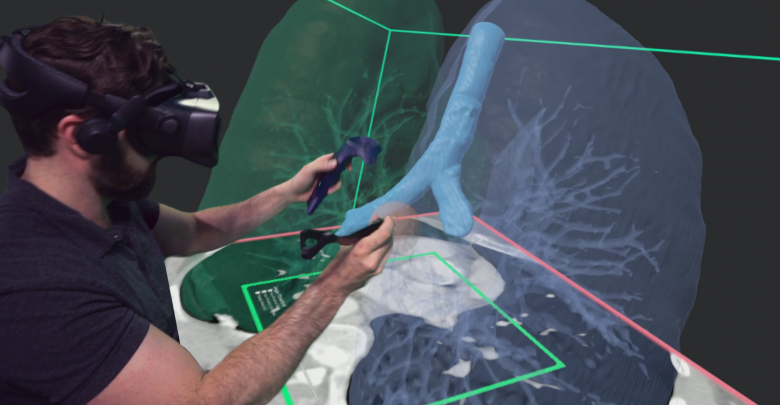Realize Medical, a VR company specializing in medical 3D modeling has announced a partnership with software and peripheral manufacturer Logitech to kit out its Elucis VR platform with interactivity. Using Logitech’s VR Ink Pilot Edition stylus, users will now be able to precisely draw and edit 3D medical models directly in Elucis.
The Elucis VR platform
Realize’s Elucis enables users to convert medical images into 3D medical models, which can then be explored and manipulated in a VR environment. The models can also be exported as raw 3D files, meaning they can be 3D printed or digitally visualized in third party software programs.
The platform was initially invented by medical professionals from the University of Ottawa, who branched off to form Realize Medical. Since its inception, the company has been focused on utilizing the power of VR to breathe new life into clinical education and training. The founders also believe that 3D models have great potential in patient-specific treatment planning, and expect to see VR, AR, and 3D printing running rampant in healthcare in the coming years.

An extra dimension with the VR Ink stylus
Logitech’s first-generation VR stylus is a clever tool with a plethora of applications. Users are able to draw on 2D surfaces, as they would with a traditional pen, with results extended to the third dimension. This can be scaled up all the way to room-sized 3D spaces, almost like a giant canvas. The stylus is compatible with a whole host of existing VR headsets, including HTC Vive and Varjo.
Justin Sutherland, CEO & co-founder of Realize Medical, states: “We are constantly on the lookout for innovative ways to improve our Elucis platform, and this partnership with Logitech does just that. Giving users the ability to draw seamlessly within our program will greatly improve the user experience, bringing us closer to meeting our mission of providing healthcare professionals with the 3D modeling tools they need to improve patient care and education.”

With 3D scanning and 3D printing becoming ever more prevalent in healthcare, their distant cousin, VR, was bound to follow. In fact, 3D systems also delved into the experimental technology in 2014 when it acquired Simbionix, a company built around providing 3D VR surgical simulations. The intent was to leverage the capabilities of anatomical modeling in a realistic 3D environment in order to better prepare medical professionals for patient-specific healthcare.
The technology extends beyond just healthcare, however, as researchers from the Korean Advanced Institute of Science and Technology have previously developed a 3D sketching platform for product design applications. The software works by merging hand motions with digital pen drawing to generate faster and more accurate engineering and graphical drawings.
Subscribe to the 3D Printing Industry newsletter for the latest news in additive manufacturing. You can also stay connected by following us on Twitter and liking us on Facebook.
Looking for a career in additive manufacturing? Visit 3D Printing Jobs for a selection of roles in the industry.
Featured image shows 3D medical modeling in Elucis’ VR environment. Image via Realize Medical.



